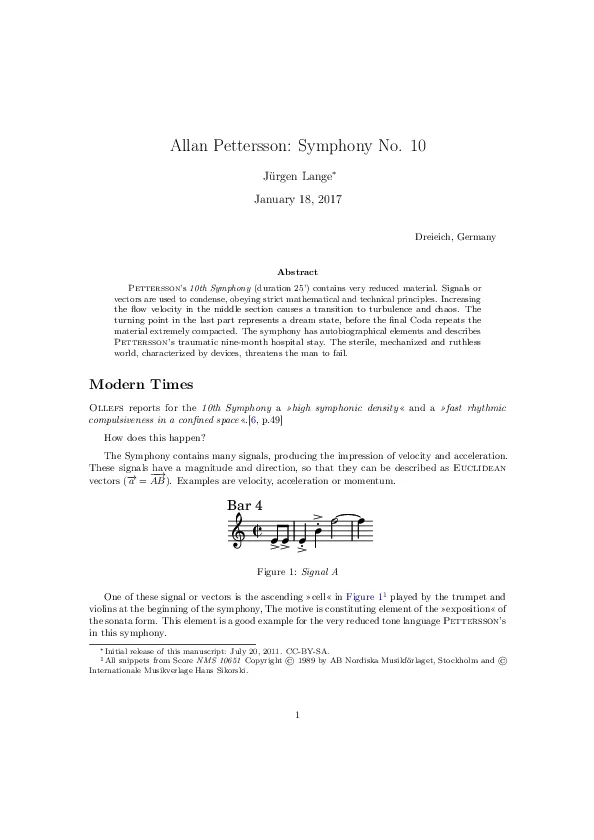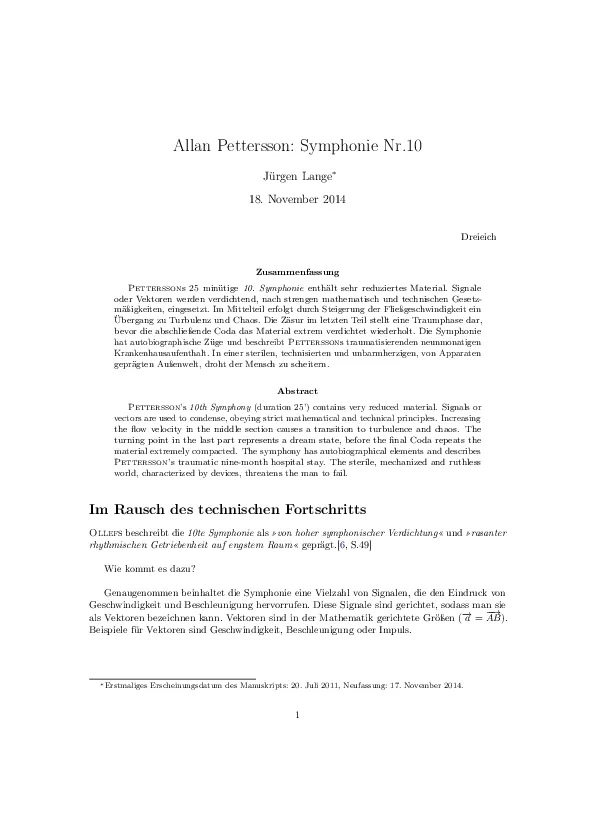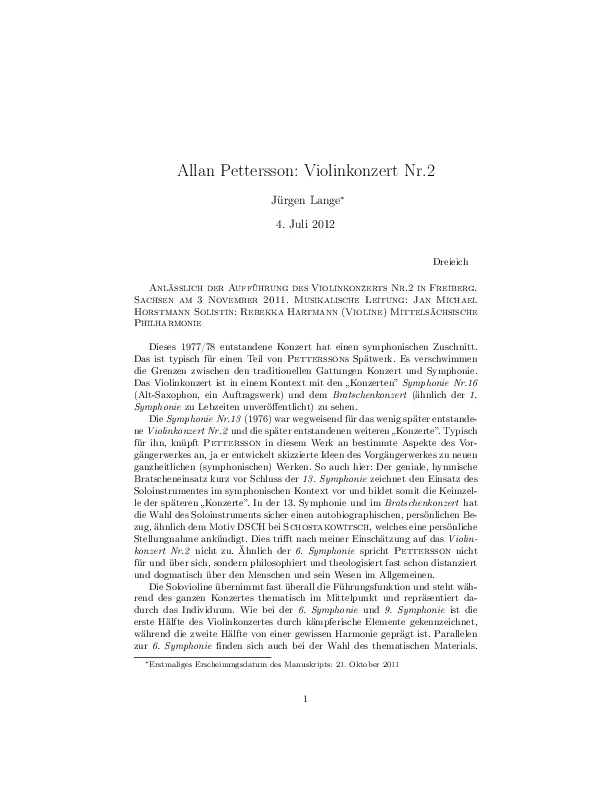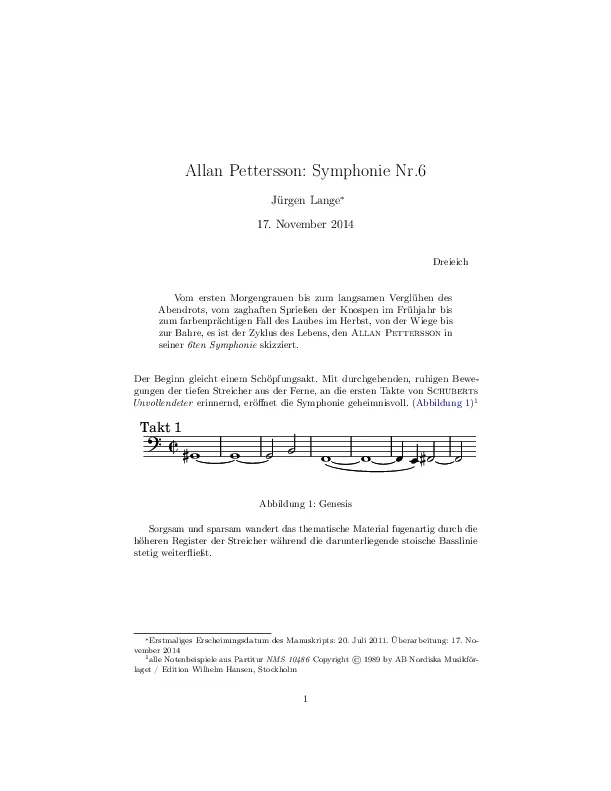Highlights
6th Symphony
life from birth to death
8th Symphony
music history from origin to decline
Article Abstract
Most of the material of Pettersson’s 8th Symphony is derived from Mozart’s Symphony No. 41 "Jupiter" and Nielsen's Symphony No. 5. The philosophy of Pettersson’s music is determined by Nielsen's vegetatio and organicism. First part of 8th Symphony describes music history from origin to decline. A cantus firmus extended to a long cantus is followed by a concatenation of different polyphonic and homophonic compositional techniques sorted chronological. Second part is a revolutionary construction of a polyphonic movement in sonata form. The symphony is the composers manifesto.
Related Symphonies
Mozart Symphony No. 41 »Jupiter« (1788)
Performances of Kungliga Filharmonikerna with Pettersson as violist:
- 1940-02-04 Fritz Busch
- 1941-11-19 Adolf Wiklund
- 1942-10-07 Oswald Kabasta
- 1946-10-16 Bruno Walter
- 1949-11-30 Fritz Busch
Nielsen Symphony No. 5 (1922)
Performances of Kungliga Filharmonikerna with Pettersson as violist:
- 1945-01-10 Tor Mann
9th Symphony
river from source to mouth
Article Abstract
Basis of an analysis of the 9th Symphony is a comparison with Smetana’s opus The Moldau. Followed by a postulate for the programmatic construction of the symphony: The River (illustrated with paintings by J.M.W. Turner). Concluding discussion topic is, that 9th Symphony portrays Sweden’s longest river Klarälven-Göta Älv.
Main Evidences for Postulate
- Chromatic runs and waves
- Can be compared to diatonic runs and waves in Moldau.
- Ack Värmeland melody
- Is the origin of Moldau melody. River Klarälven is flowing through Värmland.
- Dedication to Gothenburg
- River Göta Älv is flowing through Gothenburg.
- Smetana and Gothenburg
- Smetana lived for long time in Gothenburg as conductor. Dedicatee Comissiona is successor of Smetana.
- Final plagal cadence
- Can be compared to the final authentic cadence of Moldau.
Related Opus
Smetana Moldau (1874)
Performances of Kungliga Filharmonikerna with Pettersson as violist:
- 1941-02-08 Adolf Wiklund
- 1942-03-15 Carl Garaguly
- 1944-08-21 Tor Mann
- 1945-04-14 Carl Garaguly
- 1946-08-07 Tor Mann
- 1947-03-15 Carl Garaguly
- 1948-02-17 Rafael Kubelík
- 1948-04-10 Adolf Wiklund
Milhaud Symphony No. 8 »Rhodanienne« (1957)
1951-52 Pettersson studied composition in Paris with Milhaud.
10th Symphony
mechanical music
Article Abstract
Pettersson’s 10th Symphony (duration 25’) contains very reduced material. Signals or vectors are used to condense, obeying strict mathematical and technical principles. Increasing the flow velocity in the middle section causes a transition to turbulence and chaos. The turning point in the last part represents a dream state, before the final Coda repeats the material extremely compacted. The symphony has autobiographical elements and describes Pettersson’s traumatic nine-month hospital stay. The sterile, mechanized and ruthless world, characterized by devices, threatens the man to fail.
Music is life
philosophical perspective: organicism
Article Abstract
Some thoughts about life, organization, organicism and coherence in science and in music.
Analysis, 2015
Analysis and Postulate, 2014
Analysis and Postulate, 2014

Analysis, 2014

Analysis, 2014

Essay, 2012

Essay Music and Science, 2015
Essay, 2014

